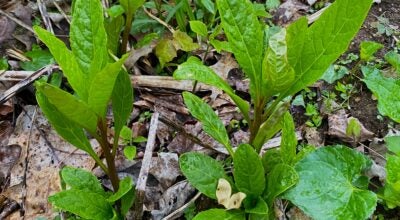Roark: Pitch pine
Published 6:00 pm Monday, May 6, 2024

- Steve Roark
|
Getting your Trinity Audio player ready...
|
We have several pine species in our area, and one of the more uncommon ones is Pitch pine (Pinus rigida). It is mostly found on dry slopes and ridges in association with other pines and oaks. It has little commercial use today but was very useful in pioneering days.
Pitch pine has dark green needles that are around three to eight inches long and form in bundles of 3. Tufts of its needles stand out upon the twigs nearly at right angles, and sometimes are found growing directly on the trunk. The tree has irregularly whorled, contorted branches that often hang downward. The crown is usually thick and round topped. The bark is thick, dark red-brown and tinged with purple. The cones are almost ball-shaped and armed with stout, curved prickles.
Pitch got its name from its extreme resinous wood. Tar, pitch, and turpentine were extracted for various uses. Tar obtained from Pitch pine was considered the best axle grease for wagons, and a bucket of tar was often carried along for on the road maintenance. The resinous wood was water resistant and used for barn floors and water wheels.
Another important use for pitch pine was its “fat wood”, wood saturated with pine rosin, usually around knots. Fat wood burns readily and very hot, making it an ideal fire starter in a stove, hearth, or campfire. It is so rot resistant that knots can be found lying on the ground long after the tree and stump have disappeared. Where plentiful, the knots were tied to a hickory branch and used for a long-lasting torch. These torches were bright enough to be used for the first “spot lighting” of deer, where the animals become mesmerized by the light and their eyes shine back, making them easy targets. In early days this was called “shining deer”.





